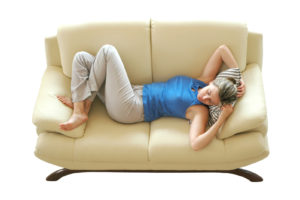Introduction
The science correlating clean air with health issues is still evolving. There is no standard definition of “Clean Air”. As a result, most standards for building indoor air quality (IAQ) are established based on people’s perception of air quality. In this article we will examine both perceived air quality and actual clean air. We will present our conclusion and recommendations for achieving the healthiest indoor air possible.
Comfortable Air
Perceived Air Quality (PAQ), as the name indicates, is the subjective assessment of air quality by those living in a home or working in a business environment. Home builders want to build homes that meet the wishes of the occupants. To determine what standards must be achieved to that end the builders conduct field studies in which sample subjects are exposed to different environment conditions, and their satisfaction with that environment is recorded.
A typical study [1] varied three levels of air temperature and humidity and two levels of ventilation rate. The values for temperature and relative humidity were:
20 Degrees C/ 40% RH, 23 Degrees C/ 50% RH,26 Degrees C/ 60%RH
Ventilation in these tests was set as:
10 liters/ second per person
3.5 liters/ second per person
Other studies [2] have examined the effect of CO2 on air perception quality.
WHAT THE STUDIES SHOW
These studies show that there is not a single value for the parameters studied that would assure an acceptable perceived air quality. The studies only show that air is perceived as acceptable when it is cool and dry and unacceptable when it is warm and humid. The ideal conditions depend on your geographical location and time of the year. Ideal Humidity is between 30% RH and 50% RH. For example Canadian standards recommend 35% RH in winter and 50% RH in summer
Other recommended values are CO2 less than 1000 ppm and ventilation rate above 0.5 air change rate per hour( or 14 liters/sec per person).
Other factors are also considered for improving comfort. For example a Danish labeling system for building primary emissions of volatile organic compounds (VOC) [3] focuses on comfort by minimizing annoying odors and mucous membrane irritation. The values of the VOCs should be below levels that can be sensed by the occupants. These levels have nothing to do with health impact. As we can see the emphasis is on maximizing the air quality perception, not the health of the building occupant.
Healthy Air
The science of clean air is still evolving. There is no standard definition of “clean air”. Scientific studies have focused on specific issues related to the ambient air such as the effects of radon, formaldehyde, sick building syndrome, air particulates, VOCs and ventilation. But all these studies were focused on the specific problems noted above. There is no single science branch that addresses all the above factors together as one subject. However, there is mounting evidence of the importance of indoor air pollution and lack of adequate ventilation in establishing a healthy air environment.Getting an Air Quality Monitor for your home is a good first step to improve your indoor air quality. Continue reading “Indoor Air – Comfortable or Healthy?”